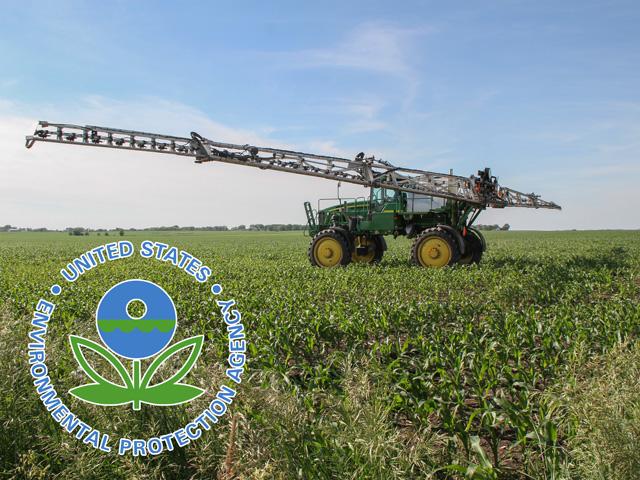States Can't Extend Dicamba Spray Dates
EPA Blocks Dicamba Spray Date Extensions in States in 2021
ROCKVILLE, Md. (DTN) -- EPA has moved to block state attempts to extend the dicamba cutoffs listed on the federal labels of XtendiMax, Engenia and Tavium in 2021.
The news came to light at a meeting of pesticide regulators taking place virtually this week, the annual conference of the Association of American Pesticide Control Officials (AAPCO).
EPA said it intends to deny an attempt by North Carolina to extend the cutoff dates for dicamba to accommodate late-planted cotton and soybean fields. The state was working to move the federal cutoff of June 20 for soybeans and July 30 for cotton out to July 31 for both crops.
Several states are trying to institute similar dicamba spray extensions via Section 24(c) special local needs labels, which allow states to add additional uses to federal pesticide labels. EPA's denial of the North Carolina extension has come as a surprise to many state regulators, outgoing AAPCO President Leo Reed noted. Although EPA recently cracked down on more restrictive 24(c) labels, the agency still allows more permissive ones. (See more here: https://www.dtnpf.com/….)
At issue, however, is legal liability for the agency, explained Michal Freedhoff, acting assistant administrator for the Office of Chemical Safety and Pollution Prevention (OCSPP).
The agency re-registered the three dicamba herbicides in 2020, after a federal court vacated the EPA's 2018 dicamba registrations, she told attendees. The court told EPA it failed to properly assess the risks of in-season dicamba use in 2018, and the 2020 labels are the agency's attempt to fix that, Freedhoff said. The agency is already facing multiple lawsuits over those new labels. (See more here: https://www.dtnpf.com/….)
P[L1] D[0x0] M[300x250] OOP[F] ADUNIT[] T[]
Permitting state 24(c) labels that were more permissive than these new 2020 labels could open the agency up to even more legal challenges, Freedhoff concluded.
"I could imagine a scenario where a court would say, 'You've told us the 2020 label measures are sufficient, and yet you told a bunch of states that they don't have to use them anymore,'" she said. "And that, I think, could have ended up with a bad outcome for everybody, not just one state."
This stance has frustrated state regulators, particularly those who did not record many off-target dicamba injury complaints in 2020 or past years, said North Carolina Farm Bureau president Shawn Harding, who also addressed the meeting's attendees.
"[EPA] told us [in a letter] that they understood that farmers needed that [cutoff extension] because of late planting of soybeans or cotton, but they still decided not to do that," he said. "That was a little frustrating for me. The letter was basically saying, 'We see where this could help farmers, but we're not going to do it.'"
DTN obtained a copy of the letter from EPA to North Carolina, stating the agency's "intent to disapprove" the state's proposed 24(c) labels with an extended dicamba cutoff of July 31 for soybeans and cotton. In the letter, EPA's current acting administrator, Jane Nishida, wrote that past evidence of late-season off-target dicamba injury has convinced the agency that its federal cutoff dates must stand for this season.
"There is ample record evidence that off-field emissions and incidents tied to dicamba use have been associated with late-season applications," Nishida wrote in the letter. "Therefore, the EPA has concluded that the use schedule and cutoff dates established under the federal labels which permit OTT treatments are necessary to maintain the no unreasonable adverse effects determination which supports these registrations."
Nor is the agency impressed with state-specific data on low dicamba complaints.
"The specific information in the [special local needs label] that applicators using over-the-top dicamba on dicamba-tolerant soybeans in North Carolina have self-reported fewer incidents of off-target movement in recent years falls short of demonstrating that extension of the required cutoff dates will not result in unreasonable adverse effects," Nishida wrote.
However, EPA might be open to allowing 24(c) cutoff extensions for "new situations" that might arise in the growing season, said Ed Messina, acting director of the agency's Office of Pesticide Programs. "If you have conditions in your state that are new, for example, maybe flooding and a late planting season, then come in and talk to us," he said at the meeting. "If there are new situations that are arising that warrant a need for 24(c) labels for dicamba, we're definitely willing to discuss that."
EPA's decision on dicamba spray extensions could also change in the years ahead, Freedhoff assured state regulators.
"I think we felt like we need a growing season worth of data under our belts to see what happens and make sure the measures put in place in 2020 were the right ones, and we will be better able to assess states' requests after that," she said.
EPA's decision not to allow dicamba cutoff extensions should not affect recent state rulemaking to further restrict the dicamba labels, Freedhoff said. See more on those state efforts here: https://www.dtnpf.com/… and here: https://www.dtnpf.com/….
Emily Unglesbee can be reached at Emily.unglesbee@dtn.com
Follow her on Twitter @Emily_Unglesbee
(c) Copyright 2021 DTN, LLC. All rights reserved.






